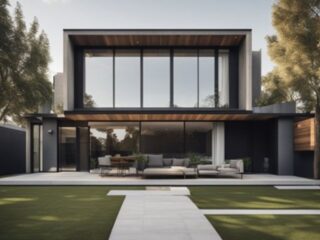
As summer temperatures rise, the quest for an efficient and effective home cooling solution becomes paramount. Two popular options are zoned cooling systems and central air conditioning. Each has its own set of advantages and potential drawbacks, making it essential to understand their differences to make an informed decision. This article explores the differences between zoned systems and central air conditioning.
Understanding Zoned Cooling Systems
Zoned cooling systems, also known as zoned heating, ventilation, and air conditioning (HVAC) systems, allow homeowners to control the temperature in different areas or “zones” of their homes independently. This is achieved through a series of dampers installed in the ductwork and separate thermostats in each zone. Here are some key points to consider:
Energy Efficiency
One of the main advantages of zoned systems is their energy efficiency. By only cooling the areas that are in use, homeowners can significantly reduce their energy consumption and, consequently, their utility bills. This targeted approach to cooling ensures that energy is not wasted on empty rooms.
Personalized Comfort
Zoned systems offer a high level of customization. Different family members can set their preferred temperatures for their respective areas. For example, if someone prefers a cooler bedroom for sleeping, they can adjust their zone without affecting the rest of the house.
Installation and Cost
Installing a zoned system can be more complex and expensive than a traditional central air system, especially in existing homes where new ductwork and dampers might be needed.
Maintenance
Maintaining a zoned system can be more involved due to the additional components, such as multiple thermostats and dampers.

Regular checks and maintenance ensure optimal performance. In addition to regular checks, it is advisable to hire a professional HVAC expert to conduct thorough inspections and address any potential issues. Professional expertise ensures that the system operates efficiently, preventing uneven temperatures and minimizing energy waste.
Understanding Central Air Conditioning
A single, centralized unit cools the entire home. The system circulates cool air through a network of ducts to deliver consistent temperatures throughout the house. Here are some considerations:
Consistent Cooling
Central air systems provide uniform cooling across the entire home. This consistency can be particularly beneficial in larger homes where maintaining an even temperature in every room is desired.
Simplicity
With a single thermostat controlling the entire system, central air conditioning is straightforward and easy to use. There is no need to manage multiple thermostats or zones, simplifying the cooling process.
Installation and Cost
While the initial installation of a central air system can be costly, especially if ductwork needs to be added or replaced, it is generally less expensive than installing a zoned system. Additionally, central air systems are a common feature in many new homes, making them a familiar choice for many homeowners.
Energy Consumption
Central air conditioning can be less energy-efficient compared to zoned systems, as it cools the entire home regardless of whether all areas are in use. This can lead to higher energy bills, particularly in larger homes or during peak summer months.
Comparing Zoned Systems and Central Air Conditioning
It is important to know the differences between zoned systems and central air conditioning to optimize energy efficiency, comfort, and cost-effectiveness in heating and cooling your home. Below is a comparison guide of zoned systems and central air conditioning.
Energy Efficiency and Cost Savings
Zoned systems typically offer greater energy efficiency and cost savings by allowing homeowners to cool only the occupied areas of the home. This targeted approach can lead to decreased energy consumption and utility bills over time. In contrast, central air systems can be less efficient due to the need to cool the entire home, even when some areas are not in use.
Comfort and Convenience
Zoned systems have a clear advantage for personalized comfort.

The ability to set different temperatures in different areas of the home allows for a more tailored cooling experience. Central air systems, while providing consistent cooling, lack this level of customization.
Installation and Upfront Costs
The installation of zoned systems is generally more complex and costly compared to central air systems, particularly in existing homes. However, for new constructions or major renovations, incorporating a zoned system from the start can be a more viable option. Central air systems, while also requiring a significant upfront investment, are typically easier and less expensive to install.
Maintenance and Longevity
Both systems need regular maintenance for optimal performance. Zoned systems, with their additional components, may require more frequent checks and servicing. Central air systems, being simpler in design, might be easier to maintain but still require annual servicing to maintain efficiency and longevity.
Conclusion
The decision between zoned cooling systems and central air conditioning highly depends on your specific needs, preferences, and the characteristics of your home. For those seeking energy efficiency and personalized comfort, a zoned system may be the better choice despite the higher initial costs. Conversely, for homeowners who value simplicity and consistent cooling throughout the home, a central air system may be more suitable.
Before making a decision, it is advisable to consult with a professional HVAC technician who can assess your home’s layout, insulation, and cooling needs. This expert guidance can help you choose the most appropriate system to keep your home cool and comfortable during the hottest months of the year.



